While war movies based on historical fact like Saving Private Ryan and Apocalypse Now are celebrated, completely fictional movies still have some insightful things to say about war. They can be used to effectively convey the horrors of war and teach the audience that such conflicts are not to be taken lightly. On the other hand, historical inaccuracies and dramatizations in war movies sometimes make a spectacle out of sensitive subject matter that should not have been adapted without being extensively researched first.
Fictional movies about war are no different and can impart important messages to viewers through the medium of sci-fi or fantasy while exploring hypotheticals. While they do not typically criticize characters for taking part in a war, some of the best fictional war movies are the ones that condemn the concept of war itself. Despite being in completely fictional settings, they’re grounded in universal truth and the combination can make for some powerful messaging.
10 World War Z (2013)
Long-term survival in a zombie apocalypse
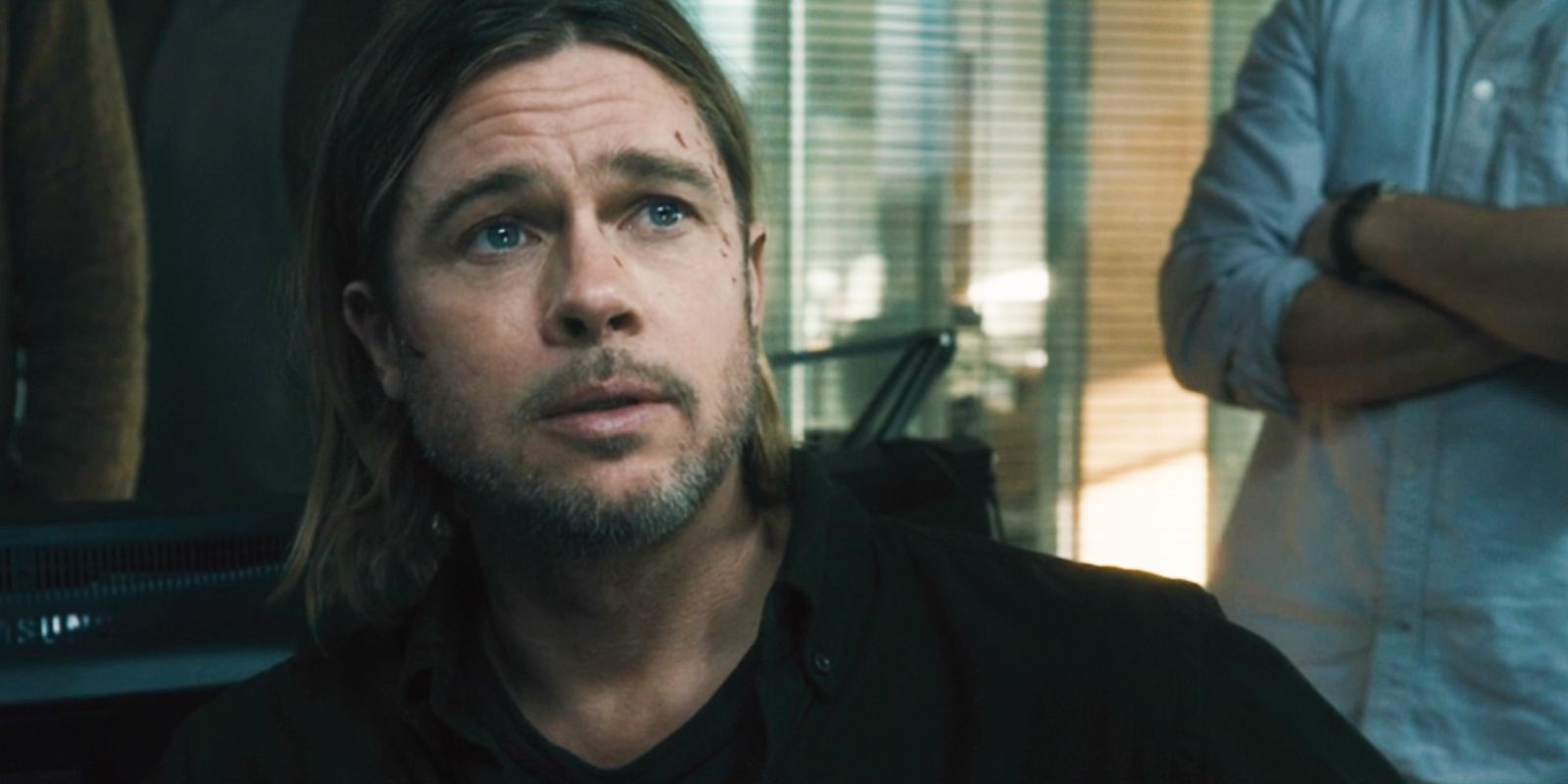
In World War Z, the protagonist Gerry Lane (Brad Pitt) tries to find a cure for a zombie contagion. The movie works best when considered in conjunction with Max Brooks’ novel. While the movie focuses on Lane’s mission in the early days of the zombie virus, the book comprises a series of interviews from people around the world a decade after the initial outbreak, showing how different countries have been affected. It is possible that after the movie’s end, society will evolve into what it is in the book, where the zombie apocalypse is devastating but manageable. World War Z suggests that in the face of a long-term conflict, humanity will adapt and endure.
9 The Hunger Games: Mockingjay Part 1 (2014)
Media and public opinion in a war
The first in the two-part Hunger Games finale sees the return of talent including Jennifer Lawrence, Woody Harrelson, and Elizabeth Banks, along with the introduction of Julianne Moore and Natalie Dormer. Hunger Games victor Katniss Everdeen finds herself at the center of District 13’s militaristic society and plays a part in a media strategy to encourage the districts to wage war on the Capitol. The Capitol forces try to discredit Katniss and the rebels. The media being used to influence public opinion is a recurring motif in the Hunger Games movies. Therefore, it is an appropriate continuation of the series to depict this after the start of a war in Panem.
8 War For The Planet Of The Apes (2017)
Does the survival of one mean the destruction of another?
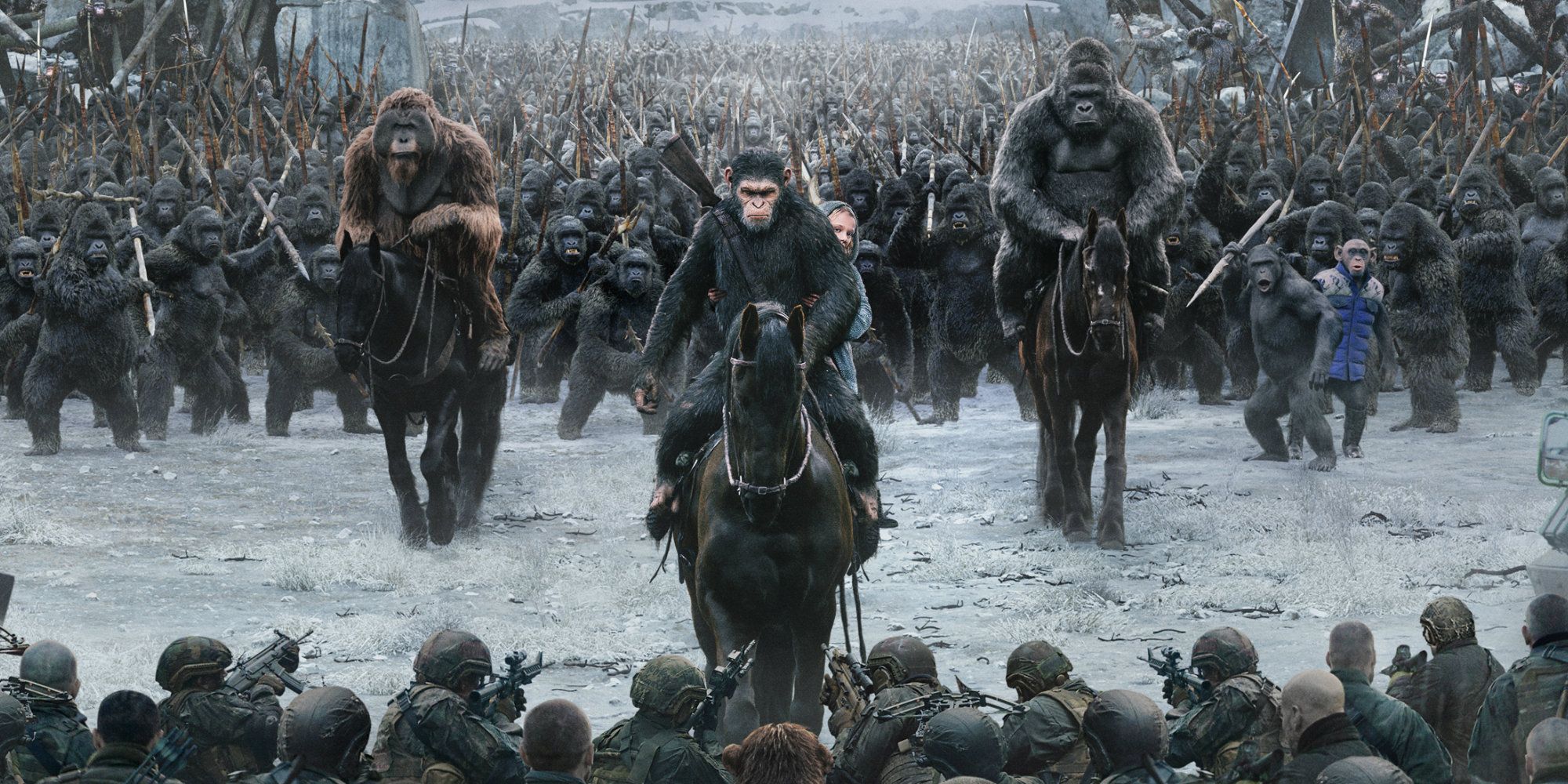
Andy Serkis returns as Caesar and Woody Harrelson is introduced as the main villain in the most recent installment of the successful Planet of the Apes reboot series. The movie includes connections to previous Planet of the Apes movies but also works as a standalone. Caesar pursues revenge when Harrelson’s character launches a devastating attack on the ape population’s new home. The plot prompts questions about revenge and peace, in the face of a villain who will commit mass murder because he believes that apes will come to replace humans.
7 Starship Troopers (1997)
Anti-fascist and anti-military satire
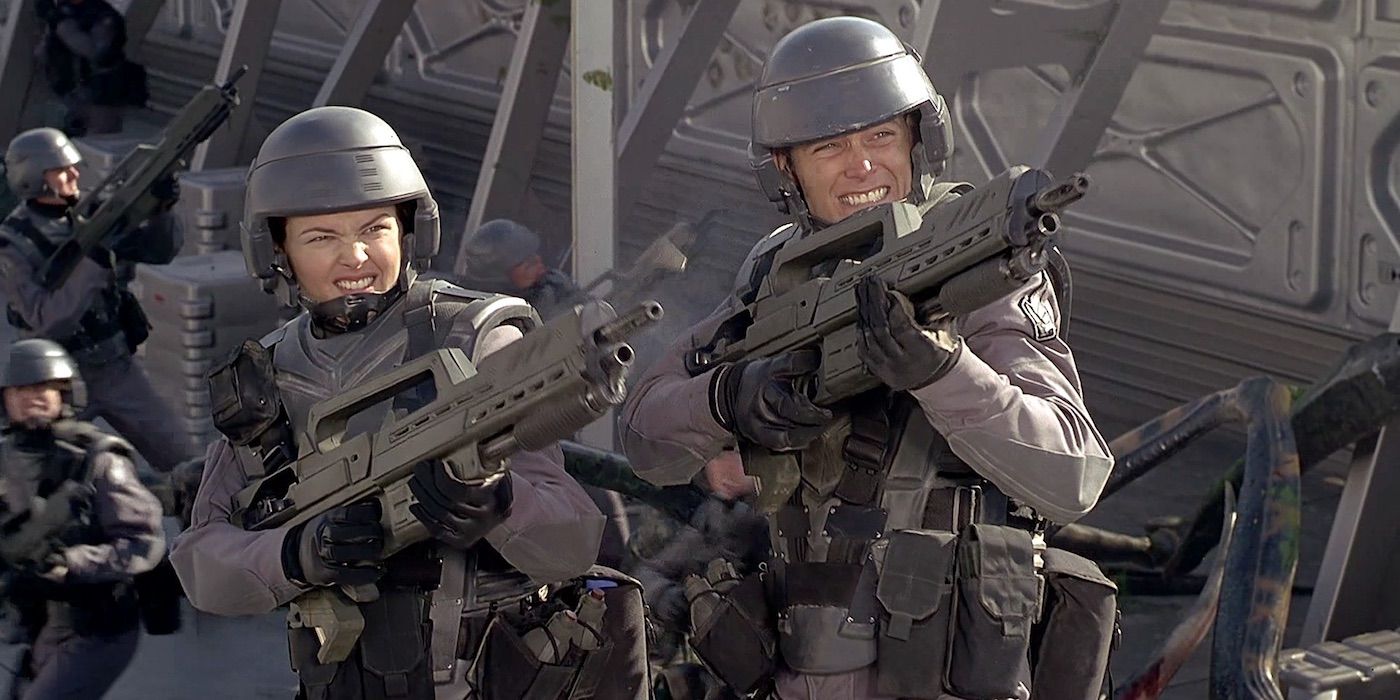
Initially met with negative reviews upon release, Starship Troopers later became a cult classic sci-fi action movie. In a militaristic society where soldiers are given more privileges than ordinary citizens, humans are engaged in an ongoing war with a population of alien bugs from space. In the end, the main characters are lauded as heroes and continue to help the war effort and recruit new soldiers, while viewers recognize that Starship Troopers condemns and skewers fascism by showing a fictional society fueled by violence.
6 War of the Worlds (2005)
Personal relationships during an alien invasion
.jpg)
In Steven Spielberg’s movie adapted from the classic sci-fi novel by H. G. Wells, an alien invasion is used as a vehicle for a story about the protagonist Ray Ferrier (Tom Cruise) repairing his relationship with his two children as they make their way to safety. War of the Worlds is praised for its action sequences and garnered generally positive reviews from critics. It also approaches the hypothetical scenario of malevolent aliens coming to Earth in an interesting yet realistic way: The humans survive not because of combative advantage, but because the aliens are susceptible to Earth’s atmosphere.
5 Howl’s Moving Castle (2004)
Pacifist undertones in a Ghibli romance
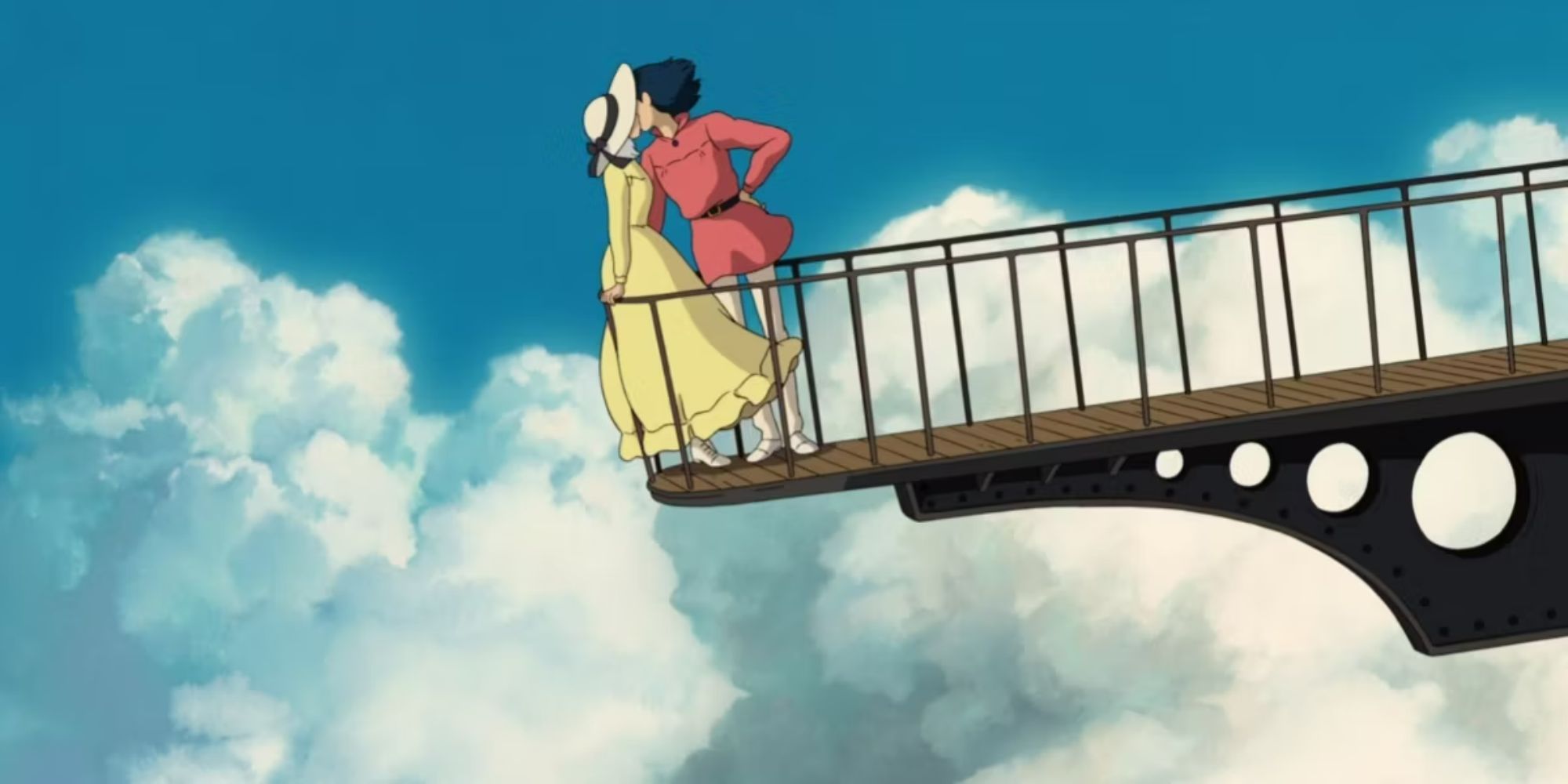
The damages of war and pacifist undertones appear in many Studio Ghibli movies. Howl’s Moving Castle features Ghibli’s beautiful signature animation with more romance than usual, focusing on the protagonist Sophie as she falls in love with the titular character, Howl. While this pair and their crew are having adventures, an undefined war is taking place in the fictional country where the story is set. The reasons for the conflict are never revealed, but in Howl’s Moving Castle, there is only a prevailing desire for the conflict to end.
4 Independence Day (1996)
Living to fight another day
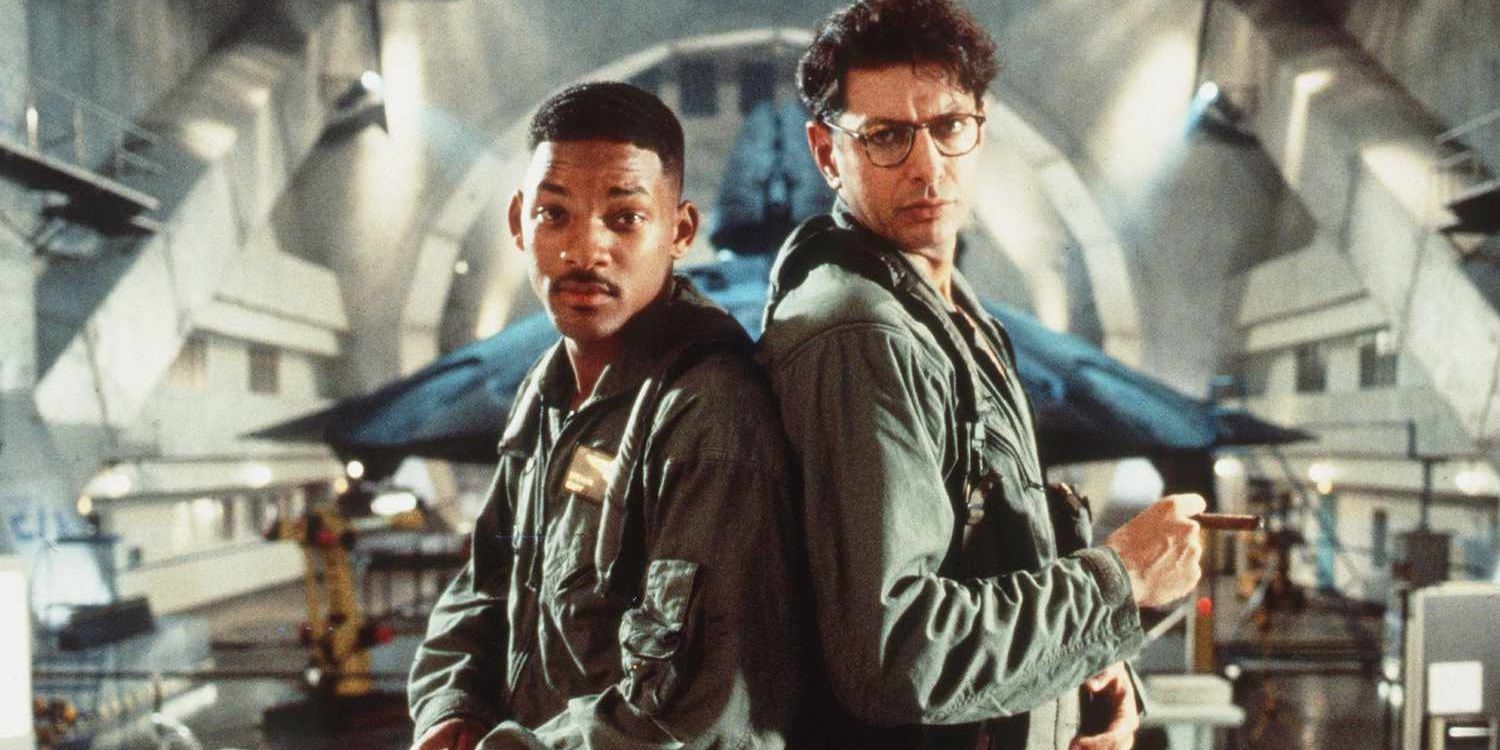
One of Will Smith’s most iconic sci-fi movies, Independence Day is another example well-known example of an alien invasion from space. Smith is joined by Bill Pullman and Jeff Goldblum in an intense action movie, the synopsis of which states that “Fighting superior technology, mankind’s best weapon is the will to survive.” Independence Day has a very simple concept, with more levity in its approach to an alien invasion to suggest that if there were to be an apocalyptic event, humans would survive it.
3 Lord of the Rings: The Two Towers (2002)
Themes of despair inspired by World War I
Tolkien notably drew upon his own experiences as a soldier during World War I while writing Lord of the Rings. The second movie of Peter Jackson’s trilogy features the strongest themes of war and its most famous action sequence is the battle for Helm’s Deep. Here the main characters do their best to rally an unprepared civilian population to fight an approaching army of orcs. Their fear is palpable, momentarily forcing the viewer to confront the realities of the situation. The heroes are saved when a battalion of Elves arrives to help (added by Peter Jackson), and later Gandalf as well.
2 Rogue One: A Star Wars Story (2016)
Ordinary people fighting for a better world
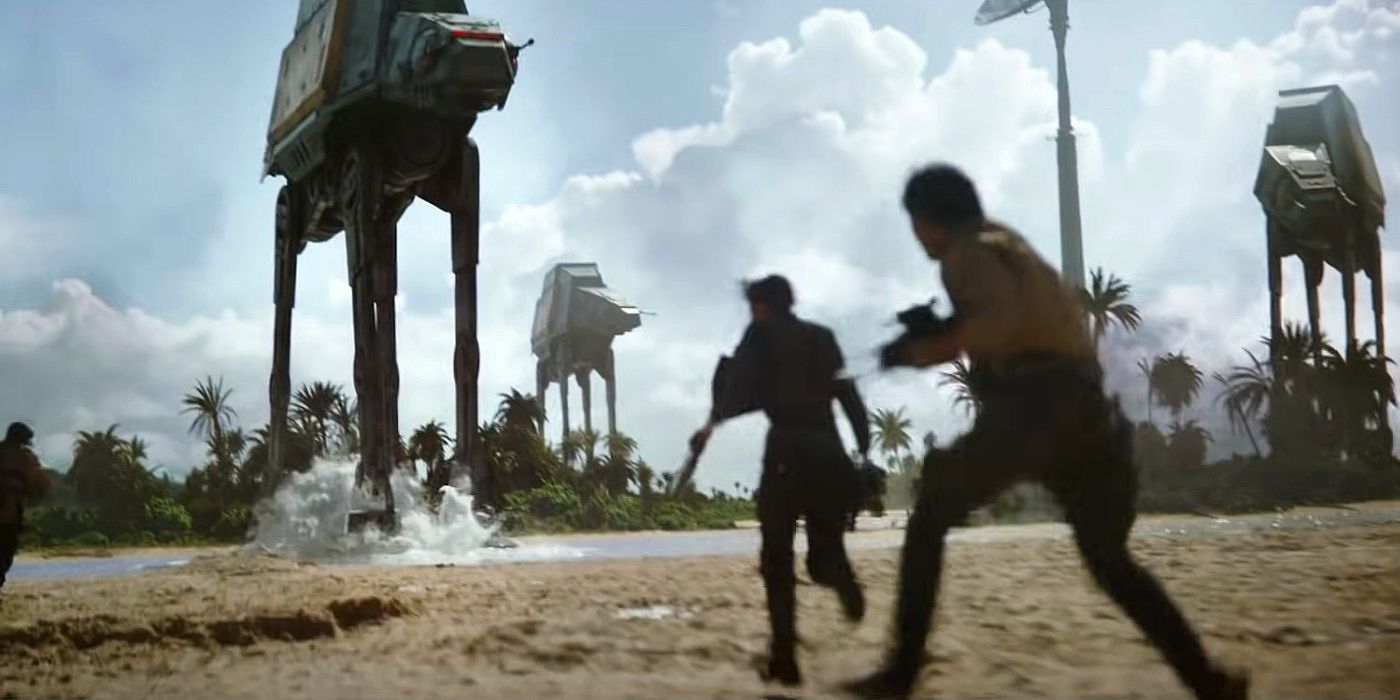
It’s in the name that the entire Star Wars saga centers around battles taking place in space. However, Rogue One most of all shows the destruction and the effects on average soldiers and people during the war between the Empire and the Rebellion. While it is weighed down by some unnecessary exposition in the lead-up to the third act, the final battle to allow a determined squadron to steal the Death Star plans is one of the best action sequences in the franchise.
1 Pacific Rim (2013)
Humanity prevails in the face of an otherworldly threat
In an inversion of Independence Day’s premise that humanity is the technologically inferior side in a war with an alien population, Pacific Rim puts forward the idea of humans fighting in giant robots. Pacific Rim also puts a twist on the alien invasion trope by having the colossal monsters emerge from Earth’s ocean while maintaining the theme of humanity uniting in the face of global extinction. Guillermo del Toro’s creative flair comes through in the creation of the mechas for stunning action sequences and an overall message about humanity’s adaptability.




